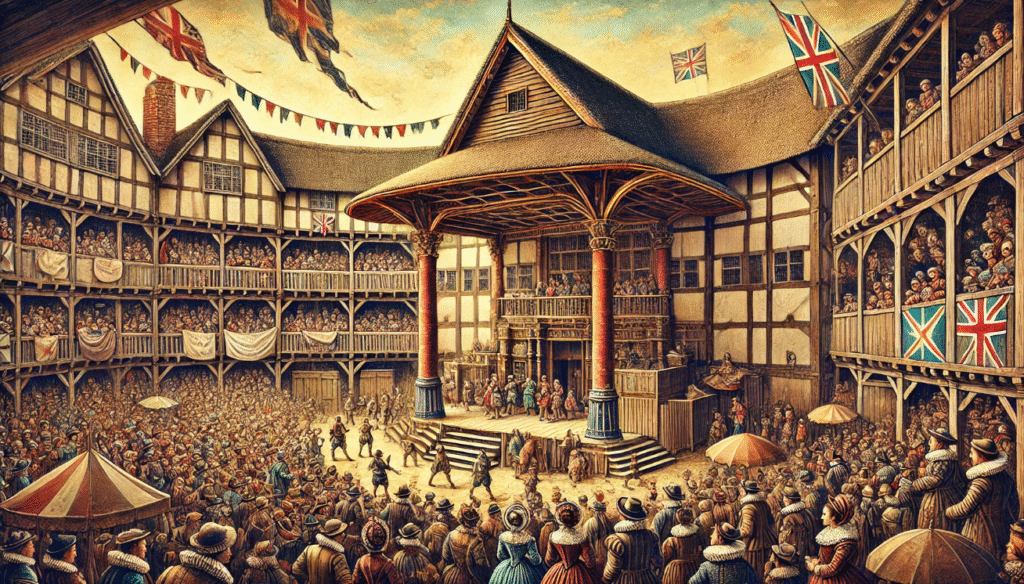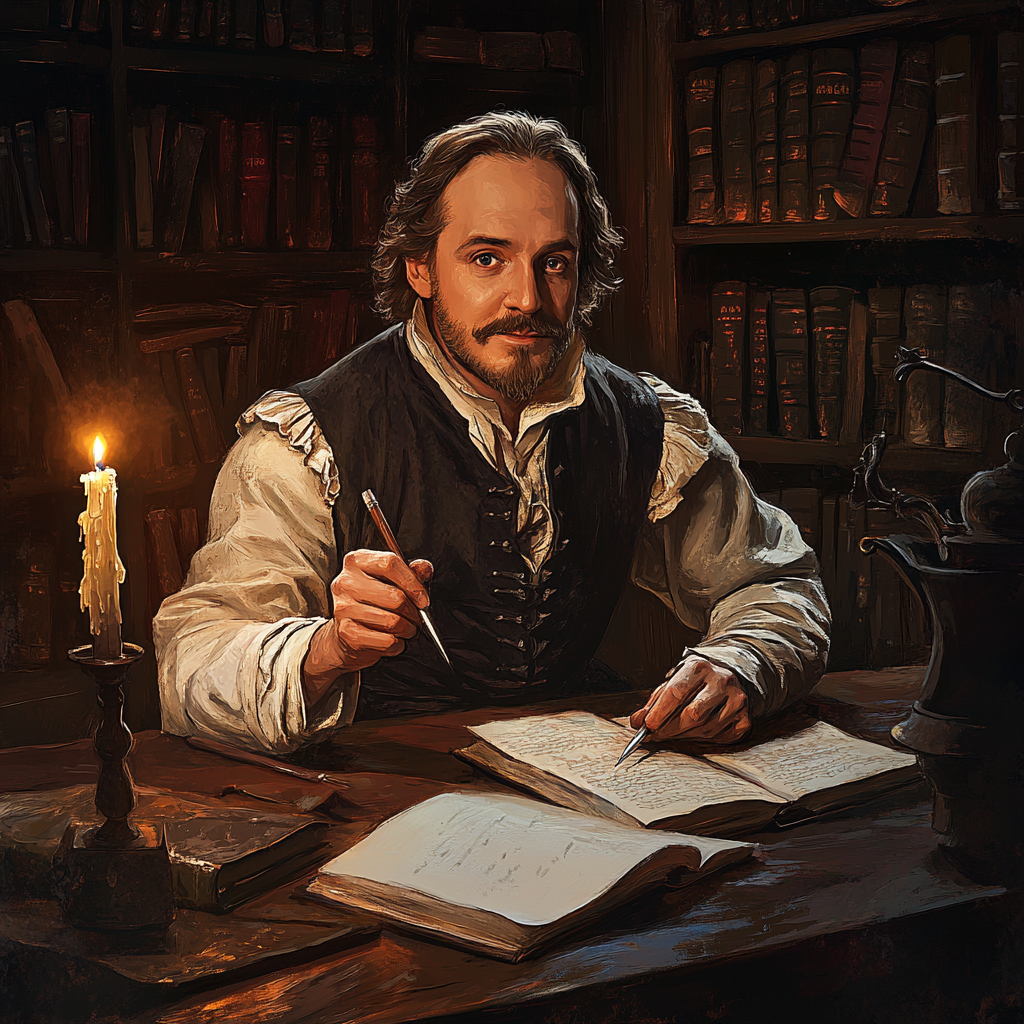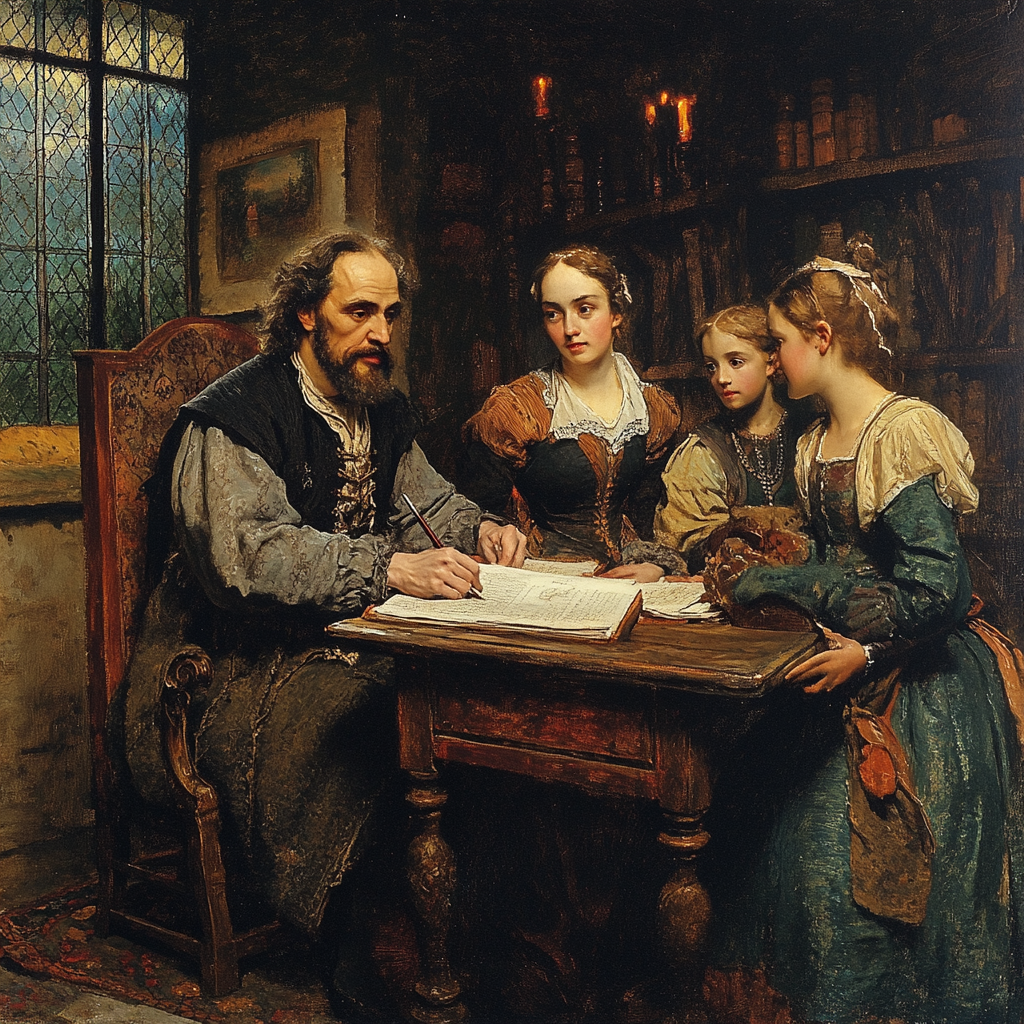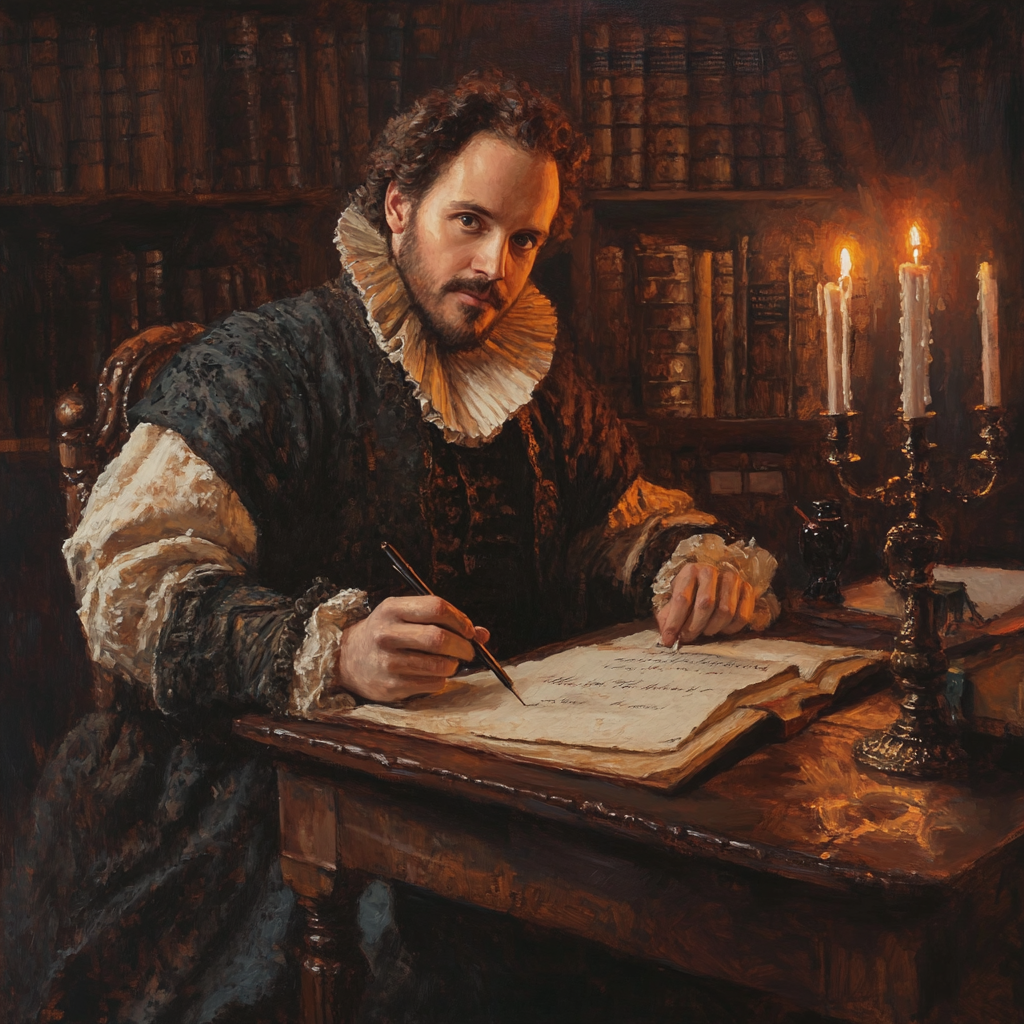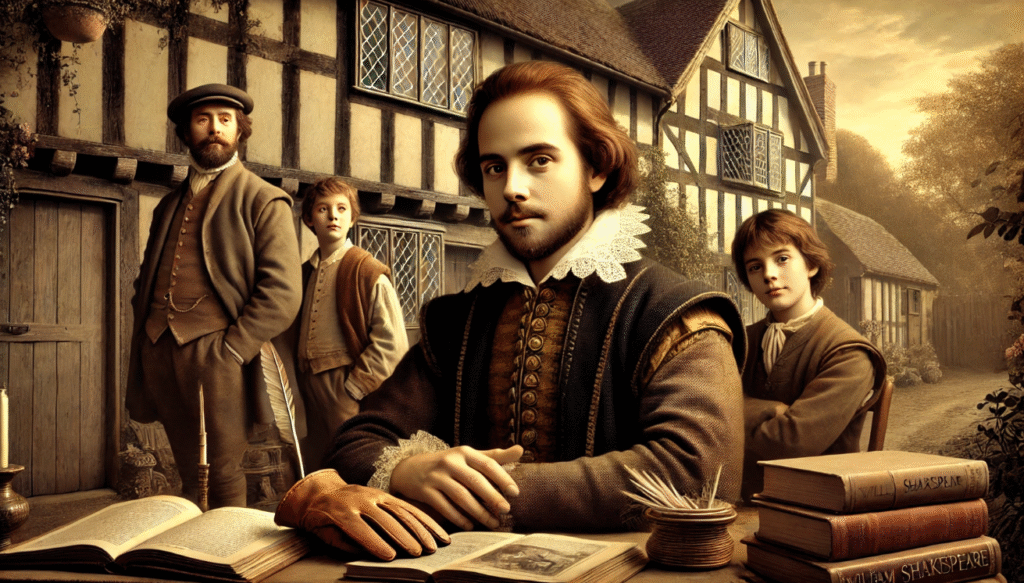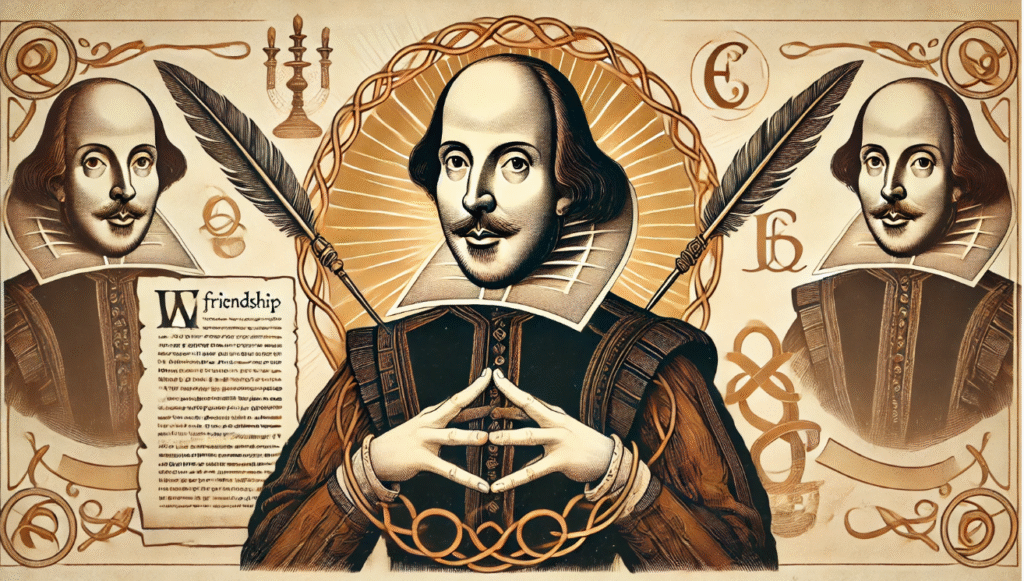The Golden Age of Drama in England refers to the Shakespeare’s influence on his contemporaries period during the late 16th and early 17th centuries when there was a flourishing of dramatic arts in the country. This era is also commonly referred to as the Elizabethan and Jacobean eras, named after the respective ruling monarchs of the time. William Shakespeare is often regarded as a central figure of this period, known for his influential and enduring works in the realms of tragedy, comedy, and history. His plays, such as “Hamlet,” “Macbeth,” and “Romeo and Juliet,” continue to be widely performed and studied today. During this time, the theater became a popular form of entertainment, with performances taking place in purpose-built theaters such as The Globe.
Shakespeare’s work had a profound influence on his contemporaries, contributing to the shaping of the Golden Age of Drama. Through his innovative use of language, deep exploration of human emotions, and complex characters, Shakespeare set a new standard for dramatic storytelling that inspired and influenced other playwrights of his time. His plays also provided a platform for the exploration of societal issues, politics, and human nature, making a lasting impact on the development of English drama during the Elizabethan and Jacobean eras.
The Cultural and Historical Context
The Elizabethan and Jacobean eras were marked by a significant period of political stability, economic growth, and cultural flourishing under the rule of Queen Elizabeth I and King James I. Queen Elizabeth I’s reign saw England emerge as a major world power, with a strong central government and a thriving economy. This stability allowed for a flourishing of the arts, including literature, theater, and music. Under King James I, England continued to experience economic growth and stability, which in turn fostered a rich cultural environment. The era saw the rise of iconic figures such as William Shakespeare, Christopher Marlowe, and Ben Jonson, as well as the flourishing of English Renaissance music and visual arts.
During the Renaissance era, public theaters became increasingly popular as a form of entertainment for the general public. The rise of public theater and the popularity of drama can be attributed to the growing interest in literature and the arts during this period. Shakespeare emerged as a prominent playwright and actor during this time, contributing to the popularity of theater and drama. His works, such as “Romeo and Juliet” and “Hamlet,” continue to be celebrated and performed to this day, showcasing the enduring appeal of Renaissance drama.

Shakespeare’s Hallmarks of Influence
Innovative Use of Language:
Shakespeare’s inventiveness with vocabulary, phrases, and poetic forms is widely celebrated and has had a lasting impact on the English language. He is credited with coining numerous words and phrases that are still in use today, such as “eyeball,” “bedazzled,” and “all that glitters is not gold.” His use of idiomatic expressions and innovative poetic forms also had a profound influence on his contemporaries and future writers. Shakespeare’s ability to manipulate language and create new expressions has contributed to his enduring legacy as a literary genius.
Complex Characters:

The approach to creating psychologically complex and relatable characters in works by contemporaries like Christopher Marlowe and Ben Jonson is evident in the way they delve into the depths of human emotions and motivations. These playwrights were known for their ability to create characters with rich inner lives, complex personalities, and relatable struggles, which has had a lasting influence on the development of character-driven storytelling in literature and drama. Their work continues to inspire writers and artists to explore the complexities of human nature and create characters that resonate with audiences on a deep and meaningful level.
Blending Genres:
Shakespeare’s skill in blending tragedy, comedy, and history into unique storytelling had a significant impact on how other playwrights experimented with genre. His ability to seamlessly weave these different elements together opened up new possibilities for storytelling and inspired others to push the boundaries of traditional genres. This influence can still be seen in contemporary literature and theater, as writers continue to explore and combine different genres to create innovative and engaging narratives. Shakespeare’s legacy as a master storyteller continues to shape the way we understand and approach genre in storytelling.
Key Contemporaries Influenced by Shakespeare

Christopher Marlowe:
Shakespeare’s tragic protagonists, such as Hamlet and Macbeth, are complex and deeply flawed individuals who ultimately meet tragic ends. These characters are elevated by Shakespeare through his masterful exploration of their inner turmoil, moral dilemmas, and psychological struggles. Hamlet, for example, grapples with existential questions and the weight of avenging his father’s death, while Macbeth is consumed by ambition and driven to betrayal and murder. Shakespeare’s skillful portrayal of these characters and their downfall serves to elevate the concept of tragic protagonists, as he delves into their inner conflicts and motivations with depth and nuance.
Ben Jonson:
Jonson and Shakespeare had a complex relationship marked by both rivalry and respect. While they may have competed for success in the theater world, Jonson also admired Shakespeare’s work and even collaborated with him on some projects. In terms of comedic works, Jonson’s plays reflect Shakespearean influence in several ways. Both playwrights were masters at creating multi-dimensional characters and witty dialogue. Jonson also drew inspiration from Shakespeare’s use of language and his ability to infuse humor with deeper themes and social commentary. Overall, Jonson’s comedic works demonstrate a clear influence from Shakespeare, showcasing a similar level of craftsmanship and storytelling prowess.

Thomas Kyd:
William Shakespeare and Thomas Kyd were both influential playwrights during the Elizabethan era, and they both had a significant impact on the development of revenge tragedy in English literature. Kyd’s play “The Spanish Tragedy” is often seen as a precursor to Shakespeare’s own revenge tragedies, such as “Hamlet” and “Titus Andronicus.” Kyd’s influence on Shakespeare can be seen in the use of themes of revenge, justice, and moral ambiguity in “The Spanish Tragedy.” The play also features elements of supernatural and sensationalism, which are often found in Shakespeare’s works as well.
John Fletcher and Francis Beaumont:
Shakespeare’s influence on tragicomedy and collaboration with other writers is profound. Many playwrights and authors have been inspired by his unique style, rich language, and complex characters. In particular, his blending of tragedy and comedy in works like “The Tempest” and “The Winter’s Tale” has had a lasting impact on the genre of tragicomedy. Writers have often looked to Shakespeare for inspiration in crafting their own works that combine elements of both tragedy and comedy, creating a dynamic and engaging narrative. The collaborative nature of Shakespeare’s work has also inspired writers to explore new ways of working together to create compelling and innovative stories.
Shakespeare’s Role in Popularizing the Theatre

Shakespeare’s success as a playwright and actor contributed to the popularity of public theatres like the Globe by drawing large audiences and generating significant revenue. His works, such as “Hamlet,” “Macbeth,” and “Romeo and Juliet,” were highly acclaimed and attracted people from all walks of life to the theatre. This led to the construction of larger and more elaborate public theatres, like the Globe, to accommodate the growing demand for entertainment. Additionally, Shakespeare’s plays were performed multiple times a week, further fueling the success and popularity of public theatres during his time.
William Shakespeare’s ability to appeal to diverse audiences has been remarkable, setting a standard for accessibility in drama. His plays have been enjoyed by people from all walks of life and continue to be performed around the world. Additionally, Shakespeare’s influence on theatrical conventions, such as staging and audience interaction, has been profound. His innovative use of language, compelling characters, and universal themes have left a lasting impact on the way theatre is both performed and experienced.
Legacy Beyond His Lifetime

The works of playwrights during the Restoration period, such as William Congreve, had a significant influence on later playwrights and the development of English drama. Congreve’s plays, known for their wit, clever dialogue, and satirical social commentary, served as a benchmark for literary excellence in drama. His use of language and his exploration of complex human relationships set a standard for future playwrights to aspire to. The influence of Congreve’s works can be seen in the comedic and dramatic plays of later periods, demonstrating the lasting impact of his contributions to the world of drama.
William Shakespeare has had an enduring impact on English literature and global theatre. His works have influenced countless writers and playwrights throughout the centuries, and his legacy continues to be felt to this day. Shakespeare’s contemporaries also played a crucial role in extending his legacy, as they built upon his work and contributed to the development of English literature and theatre. Their contributions further solidified Shakespeare’s influence and helped shape the literary and theatrical landscape for generations to come.
Shakespeare and his contemporaries were pivotal figures in the development of English literature and drama during the Elizabethan era. Their works continue to be celebrated and studied to this day for their timeless themes and powerful language. For example, William Shakespeare’s “To be, or not to be: that is the question” from Hamlet is one of his most famous quotes, demonstrating his ability to capture the human experience in a single line. Similarly, Christopher Marlowe’s “Was this the face that launch’d a thousand ships” from Doctor Faustus showcases his talent for evocative imagery. When examining specific plays, Hamlet, Dr. Faustus, and Volpone are excellent case studies for drawing direct comparisons.

